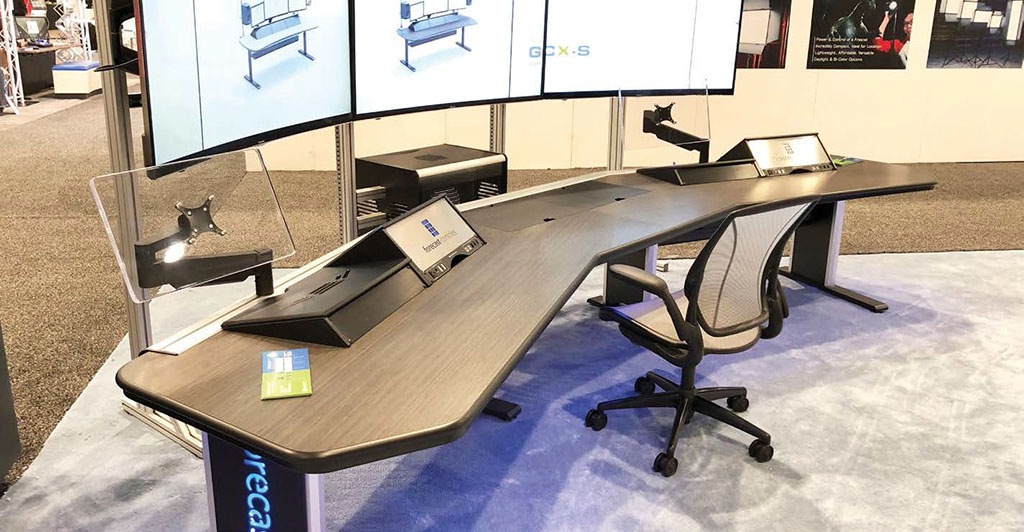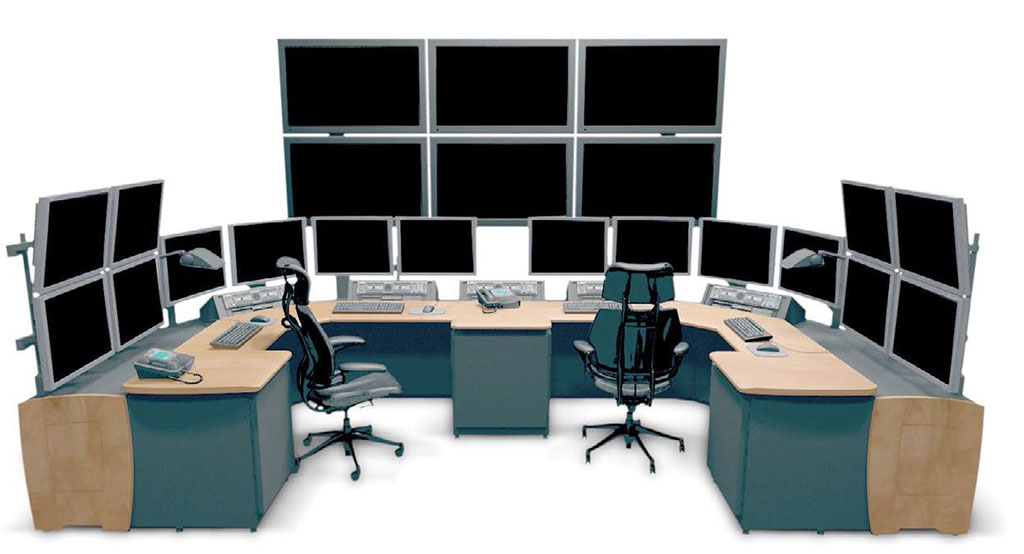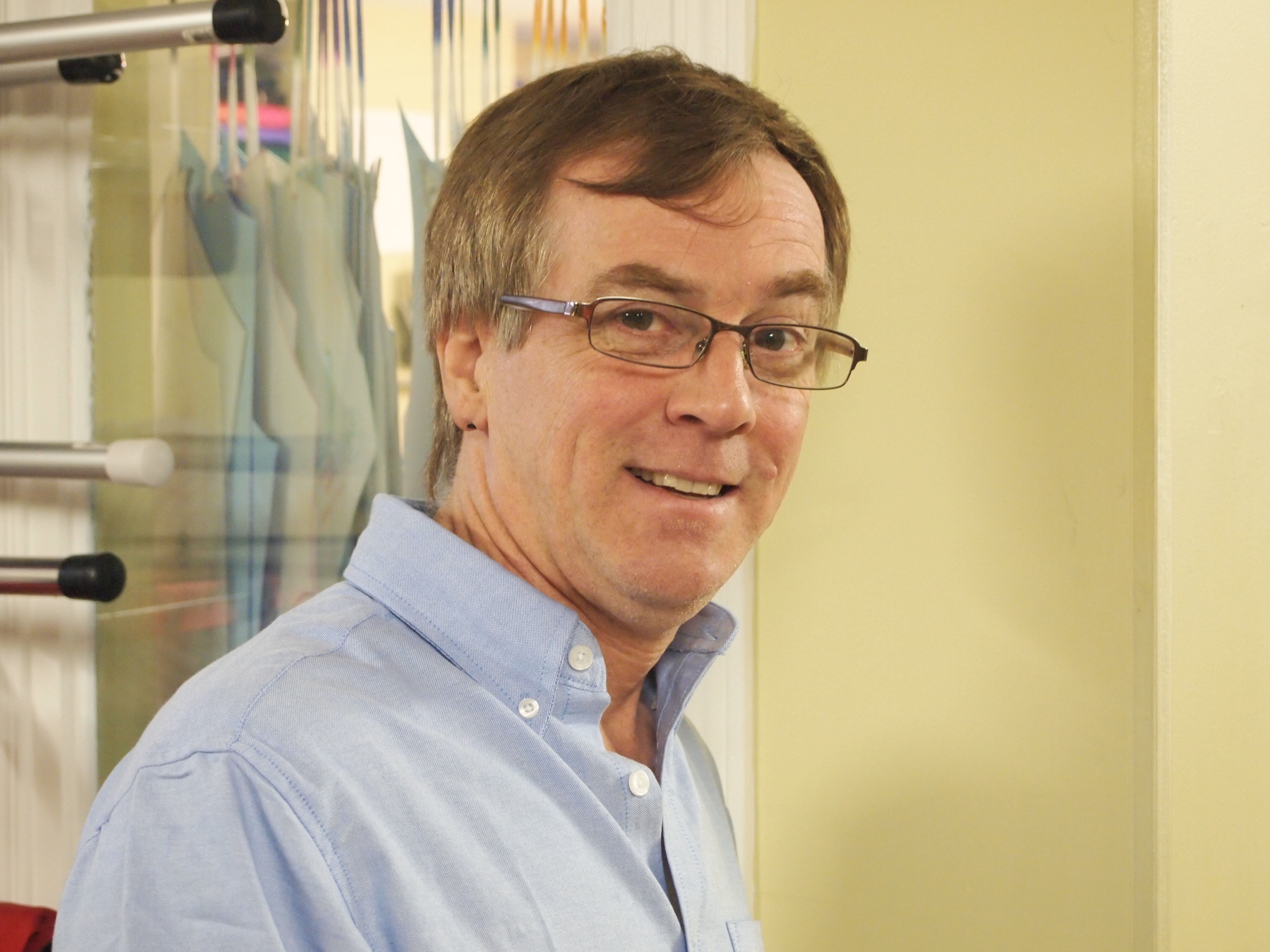Broadcast Consoles: Marrying Ergonomics With IP
OTTAWA—Forget the NASA look. The days of massive metal-cased production consoles and substantial furniture made of rich-looking woods are long gone.
Today, the trend in modern broadcast/production furniture is minimalist. Manufacturers such as Forecast Consoles, Middle Atlantic, and TBC Consoles are using a mix of thin, shaped metals and smooth, understated surfaces made of faux wood, tinted Lucite and Plexiglas, and other synthetic materials.

SLIM IS IN
When one looks at modern broadcast/production furniture, it is obvious that you can never be too thin.
Gone are the heavy-duty, tank-like desks with vast under-table rack space, and above-desk stacks of side-by-side boxy CRT (cathode ray tube) monitors. They’ve been replaced by clean, pedestal-mounted tables with lots of leg room but minimal (if any) rack space underneath, plus above-desk support frames that barely catch the eye.
“Today, people want broadcast/production furniture that could easily blend into an IT department full of computers, not switchers,” said Gordon Wason, Middle Atlantic’s Broadcast East business development manager. “As a result, the IT look is really affecting how we design our products.”
A major influence has been the flat panel monitor—with HD (and 4K) displays becoming ever-thinner, it makes stylistic sense to mount them on multimonitor display stands that are themselves minimalist and hardly visible. In turn, the consoles that accompany these flat panel displays mirror the same sense of lightness and simplicity. Heavy and clunky is out.
The professional video industry's #1 source for news, trends and product and tech information. Sign up below.
KEEP IT DISCREET
Today’s broadcasters also want products that look like business furniture, rather than industrial racks of electronics with randomly-flashing lights that scream, “Tech!”
“Everybody is looking for furniture where the installed equipment is accessible but not necessarily visible,” said Jansen Hahn, TBC Consoles’ chief operating officer. “They also want their work surfaces to be clean and uncluttered, which is why our latest consoles and desks keep the monitors off the tabletop using vertical stands or back-mounted arms. In addition, users also do not want to see cables, which is why our new line of consoles feature cable access through the legs of the console.”

The move towards the cloud has certainly lessened the need for rackmounted proprietary units to be installed in consoles, but there’s more to the minimalist trend than just the move to IT. Think of it as the “IT trickle-down effect:” As computers become central to broadcast production, the aesthetic that guides IT furniture design is now influencing broadcast/production furniture design. This means keeping equipment discreet and, where possible, hidden out of sight.
Television equipment manufacturers used to house their products in standard-sized rackmountable units with consistent horizontal dimensions; the only place where variability was allowed was in the height of the equipment case: It could be 1RU high, or two, or three—but the length and width stayed constant.
Today, all this has changed. “Because people are now incorporating all kinds of ‘nontraditional’ technology into their production spaces, we need to move beyond bay-width dependency,” said Ryan Haberman, chief executive officer of Forecast Consoles. “As a result, our newer product lines are designed to account for varying equipment sizes, wider monitors, touch based equipment, and modular components for easy reconfiguration. We now have a creative space to partner with clients, integrators, and equipment manufacturers to develop truly unique solutions.”
SHRINKING SPACES
The move to software-based production also means the days of requiring dedicated, function specific spaces for master control and video/audio editing are over. It is now common for these hitherto isolated technical activities to be located in conventional office spaces; alongside accounting and human resources if need be.
Now that this is happening, the economic factors that are affecting general office design are also affecting video production. “Commercial rents are getting higher per square foot, which means that managers want to reduce their operational footprints,” said Megan Knedler, Legrand AV Division’s director of product management, furniture.
“As a result, broadcasters and video production companies are moving their facilities into smaller spaces,” Wason added. “In the past, an audio/video editing bay using broadcast-specific equipment had its own dedicated, specially wired room. Today, an IT-based editing suite is being located in a conventional office; or even just a cubicle with the editor wearing headsets.”
James Careless is an award-winning journalist who has written for TV Technology since the 1990s. He has covered HDTV from the days of the six competing HDTV formats that led to the 1993 Grand Alliance, and onwards through ATSC 3.0 and OTT. He also writes for Radio World, along with other publications in aerospace, defense, public safety, streaming media, plus the amusement park industry for something different.

